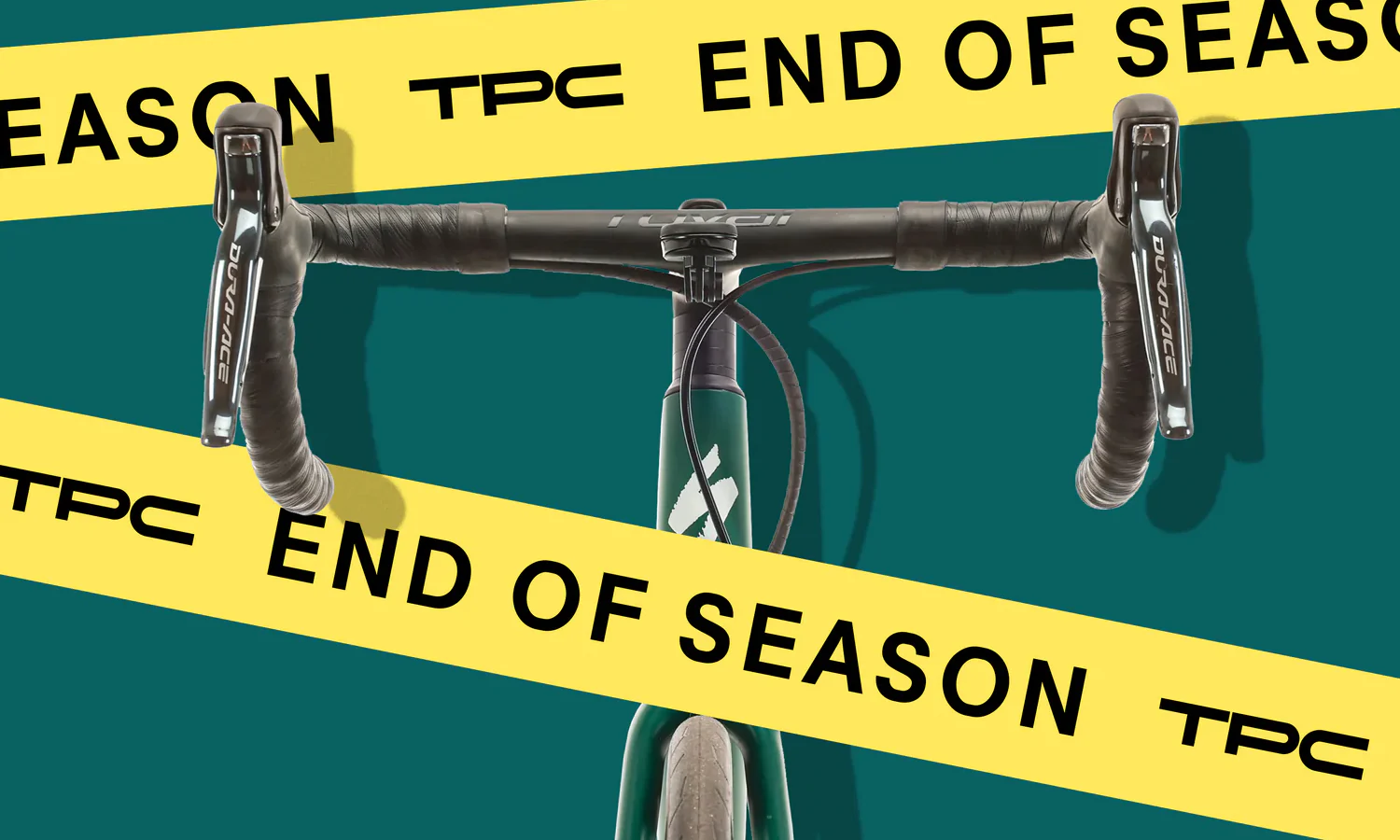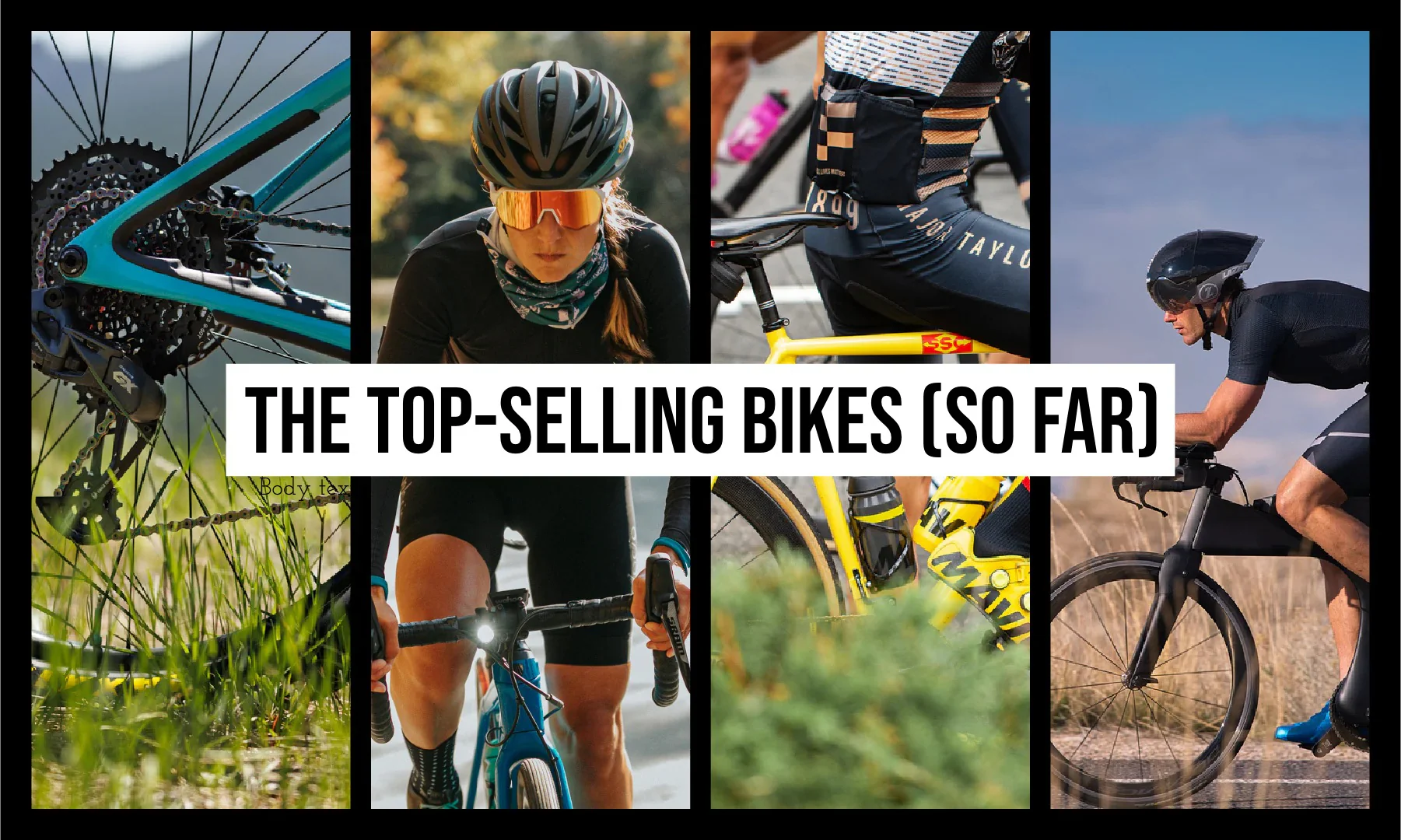Imagine a road bike that can do it all. You can race, take on gran fondos, jump in fast group rides, and grind out your daily commute. If you're feeling daring, you can venture away from the pavement and explore rough gravel roads. If this is the riding you dream of, an endurance road bike might be just what you need.
Endurance bikes were originally designed to tackle the cobbled classics, hard one-day pro races on Europe's roughest roads. They have relaxed geometry, upright riding positions, and stable handling, plus more compliance and wider tire clearance to reduce rider fatigue and improve performance on bumpy surfaces.
The two undisputed kings of the endurance category are the Specialized Roubaix and the Trek Domane. If you're looking for an endurance bike, there's a good chance you're considering one or the other. Maybe that's why you're here! So how do you choose which is right for you? We'll explore the history, technology, features, race results, and even popularity to help you decide.
Contents
- Roubaix SL8 vs. Domane Gen 4
- Roubaix & Domane Full Model History
- Future shock vs. IsoSpeed
- Tire clearance
- On-bike storage
- Bottom bracket standards
- Rim and disc brake options
- Women's models
- Race results
- Popularity
- Final thoughts
Specialized Roubaix SL8 vs. Trek Domane Gen 4

|
Model |
Specialized Roubaix SL8 |
Trek Domane Gen 4 |
|
Frame Weight (claimed) |
950 g (56cm) |
1,193 g (56cm) |
|
Tire Clearance |
38/40mm |
38mm |
|
Front Compliance |
Future Shock 3.0 (20mm) |
None |
|
Rear Compliance |
AfterShock Tech (18mm) |
IsoSpeed |
|
Internal Storage |
None |
Downtube |
|
Bottom Bracket |
BSA threaded |
T47 threaded |
Both the Specialized Roubaix and Trek Domane have received major updates in recent years. Specialized released the latest Roubaix SL8 for the 2024 model year, while Trek released the Domane Gen 4 for the 2023 model year.
Here are the highlights...
Specialized Roubaix SL8 Updates

- Increased tire clearance
- Updated Future Shock 3.0
- Additional frame mounts for fenders, toptube bag, and bottle cage under downtube
- Reduced weight
- Improved aerodynamics
Trek Domane Gen 4 Updates

- Rear IsoSpeed is no longer adjustable
- No more Front IsoSpeed
- Switch from a seatmast to traditional seatpost
- Reduced weight
- Improved aerodynamics
Roubaix SL8 vs. Domane Gen 4: Key Highlights
- The Roubaix SL8 provides better front-end compliance for hand and arm comfort with the Future Shock 3.0
- The Domane Gen 4 provides more rear-end compliance for sit bone and lower back comfort with Rear IsoSpeed
- Based on claimed frame weights, the Roubaix SL8 is slightly lighter
- The Domane Gen 4 has in-frame storage built into the downtube for a repair kit, spares, food, or other accessories
- The Domane Gen 4 is a bit simpler, with fewer moving parts
- Both use relaxed endurance geometry. The Roubaix SL8 has more stack height (~10-20mm) than a Domane Gen 4 of the same size
- Tire clearance is now essentially the same. Both bikes can officially fit 38mm wide tires with plenty of clearance and riders reportedly have no issues fitting 40mm tires too
Roubaix & Domane Full Model History
Roubaix (2004-2007)
The Specialized Roubaix debuted in 2004, and it has come to define the modern endurance bike genre. The Roubaix takes its name from Paris-Roubaix. Known as the "Hell of the North," Paris-Roubaix is a grueling spring classic that includes about 29 rough sectors of cobblestone roads in Northern France. Endurance bikes like the Specialized Roubaix were created to help the world's best riders tame the 'stones.
Robert Hines, the inventor of the Roubaix, felt that the bikes used in Paris-Roubaix were ill-suited for cobbled racing as well as general “real-world” riding. Road racing bikes were stiff with steep angles and super-short chainstays. This made them agile and fast for flying up mountains, but unstable over Roubaix's brutal cobbled sectors. Plus, on these bikes, riders were unable to fit wide tires, making them even harsher. With the Roubaix bike, Hines hoped to improve comfort after many hours in the saddle.
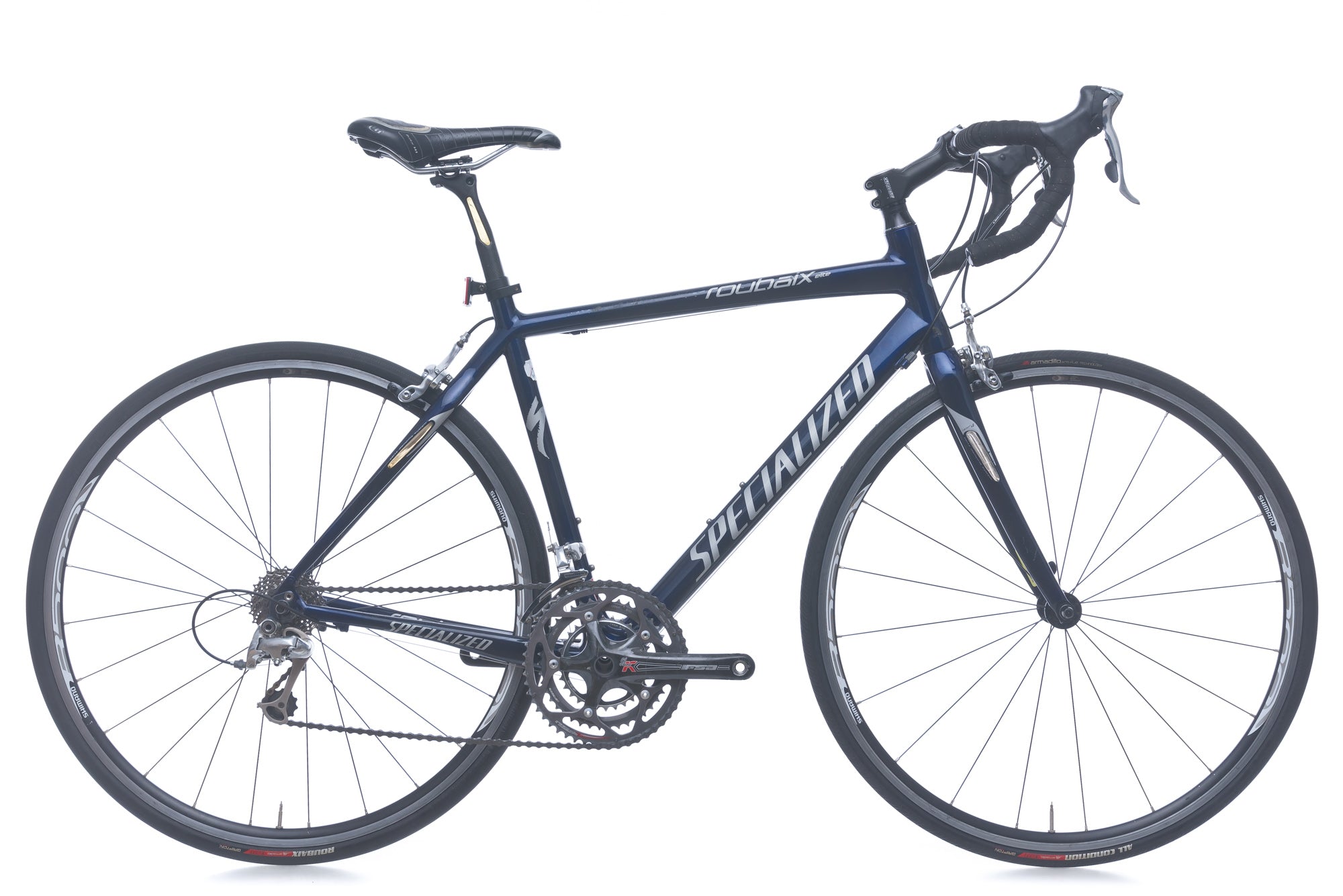 The first Roubaix introduced relaxed geometry that emphasized comfort. Andy Pruitt, one of the world’s foremost cycling fit experts, contributed fit and geometry ideas that helped Specialized develop the Roubaix’s new position.
The first Roubaix introduced relaxed geometry that emphasized comfort. Andy Pruitt, one of the world’s foremost cycling fit experts, contributed fit and geometry ideas that helped Specialized develop the Roubaix’s new position.
“The endurance position with higher bars and suspension built into the frame launched a whole new category of bike,” he said in an interview with The Pro's Closet in 2019. “If you’re more comfortable, you’re going to be able to go faster and harder for longer.”
The “suspension” came from Specialized’s Zertz technology. Zertz inserts are elastomers inserted into the fork legs, seat stays, and seatpost that helped dampen vibration and increase comfort. The Roubaix was also capable of fitting larger tires than most road racing bikes (27-30mm), further increasing comfort over rough terrain. Tires of this size have since become the standard for endurance bikes.
The Roubaix has become the most dominant bike at Paris-Roubaix with seven wins to date. Some of the world’s best classics riders, such as Tom Boonen, Fabian Cancellara, and Peter Sagan, have won aboard a Roubaix.
There have now been six generations of the Roubaix. In some cases, previous-generation Roubaix bikes may have continued briefly after the release of a new model in entry-level Sport or Comp trims.
Roubaix SL2 (2008-2010)
 The second-generation Roubaix debuted in 2008, with better overall torsional and rear-triangle stiffness. This improved the bike’s agility and handling while maintaining the vertical compliance and comfort it was built upon.
The second-generation Roubaix debuted in 2008, with better overall torsional and rear-triangle stiffness. This improved the bike’s agility and handling while maintaining the vertical compliance and comfort it was built upon.
Roubaix SL3 (2010-2012)
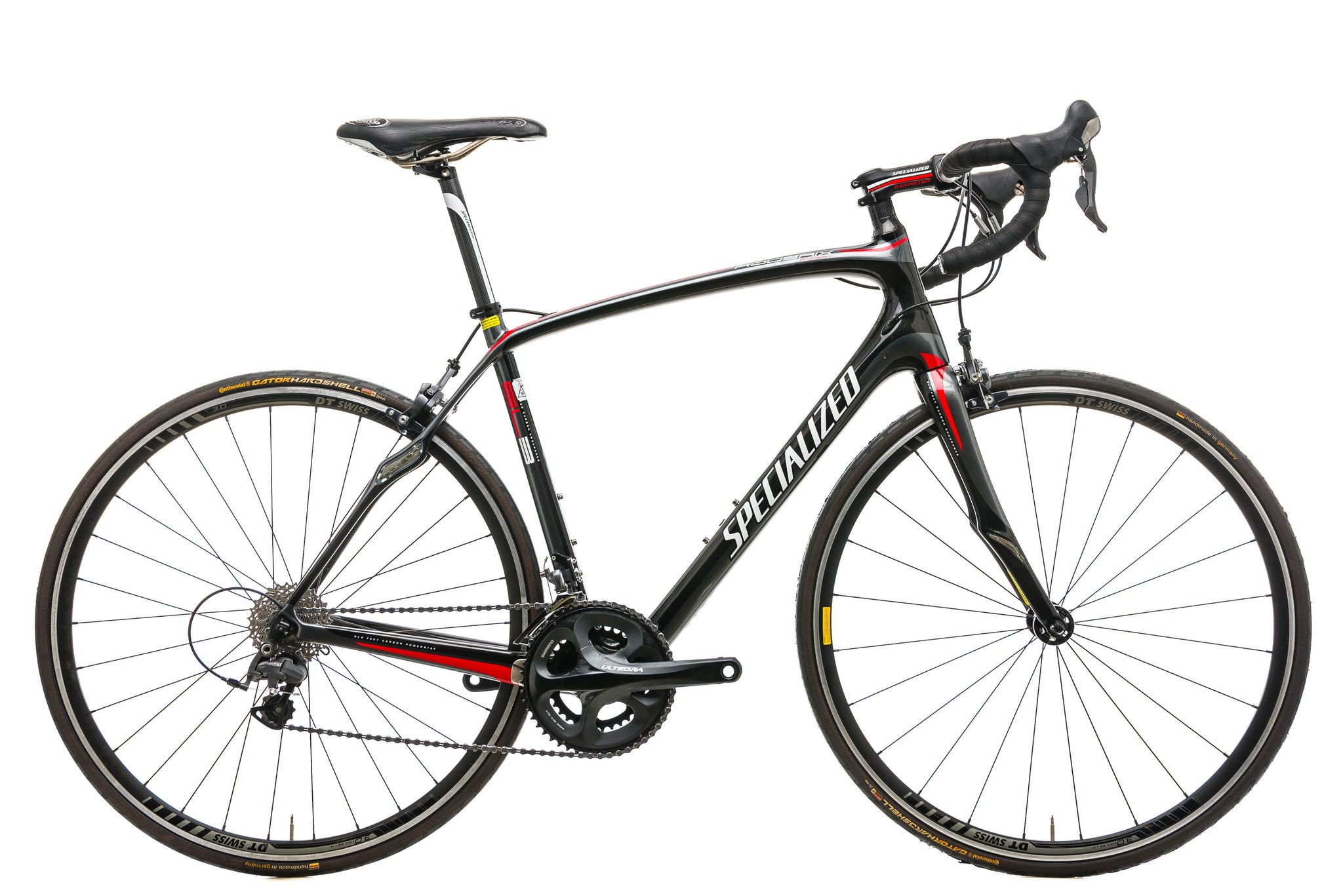 The third-generation Roubaix used carbon lay-up technology adopted from the Tarmac SL3 road racing bike. The carbon frame was lighter and featured new and improved Zertz visco-elastic dampers.
The third-generation Roubaix used carbon lay-up technology adopted from the Tarmac SL3 road racing bike. The carbon frame was lighter and featured new and improved Zertz visco-elastic dampers.
Roubaix SL4 (2012-2017)
 The fourth-generation Roubaix further improved efficiency and cut weight with a new tapered fork and head tube to improve torsional stiffness. The carbon tubes and layup were all independently sized and tuned for each size run. It also introduced the CG-R seatpost. The new seatpost looked unusual, but provided 18mm of vertical compliance to improve ride comfort.
The fourth-generation Roubaix further improved efficiency and cut weight with a new tapered fork and head tube to improve torsional stiffness. The carbon tubes and layup were all independently sized and tuned for each size run. It also introduced the CG-R seatpost. The new seatpost looked unusual, but provided 18mm of vertical compliance to improve ride comfort.
Roubaix with Future Shock (2017-2019)
 The fifth-generation Roubaix (some refer to this as the SL5) was a radical redesign. Zertz inserts were replaced with Future Shock. Built into the headset, Future Shock provided 20mm of active suspension at the front of the bike.
The fifth-generation Roubaix (some refer to this as the SL5) was a radical redesign. Zertz inserts were replaced with Future Shock. Built into the headset, Future Shock provided 20mm of active suspension at the front of the bike.
Rear compliance was improved as well with a longer CG-R seatpost paired with a low twin-bolt seat clamp to allow for more flex. Clearance for bigger 32mm tires and the addition of a S.W.A.T. storage container integrated into the bottom of the main triangle increased the bike’s versatility.
Roubaix with Future Shock 2.0 / 1.5 (2020-2023)
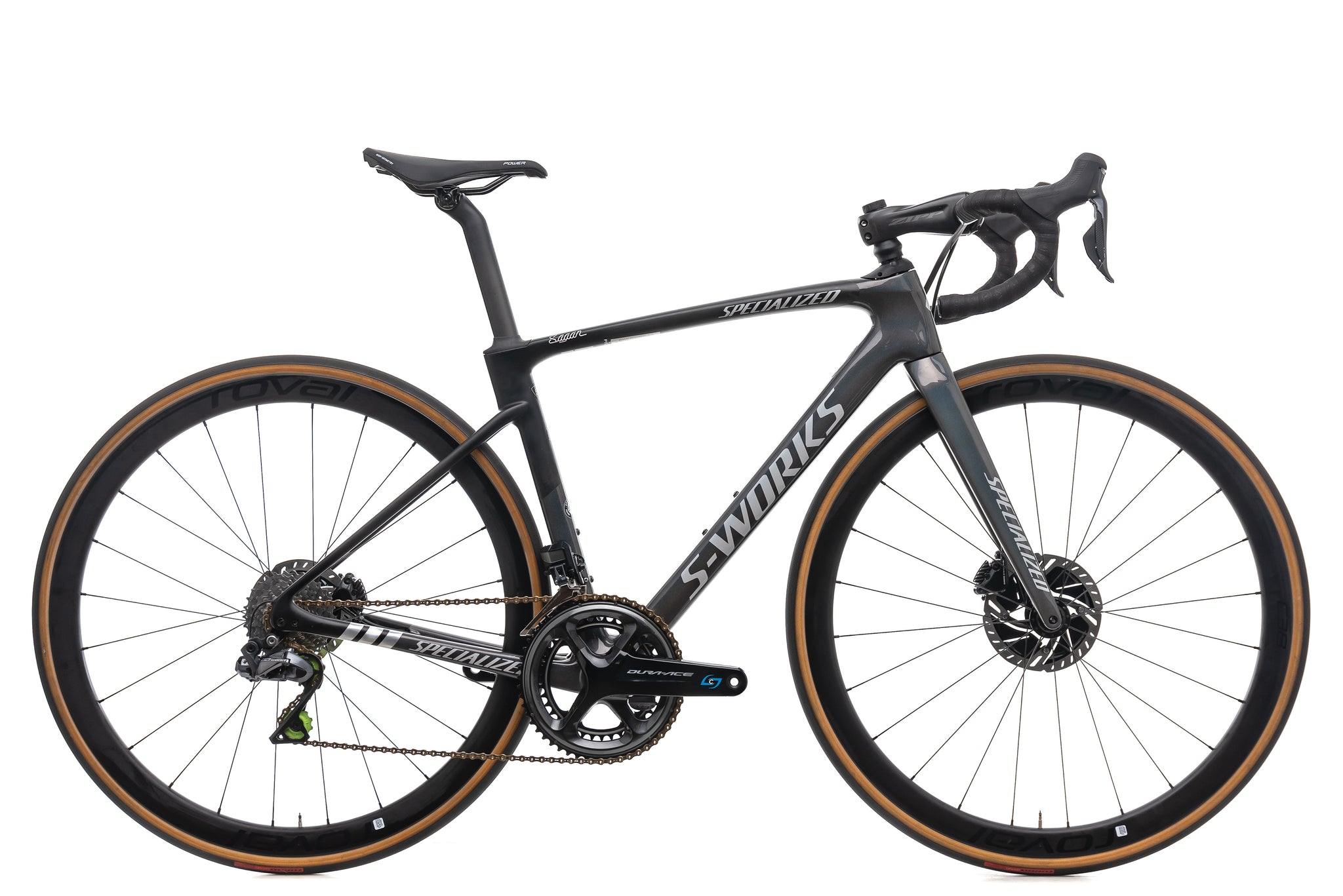 For the 2020 Roubaix, weight was reduced and aerodynamics improved. The tube shapes have been tweaked and Specialized claims that the new Roubaix is now more aerodynamic than the Tarmac SL6. The CG-R seatpost has been replaced with the new Pavé seatpost which has an aerodynamic D-shape and more built-in flex.
For the 2020 Roubaix, weight was reduced and aerodynamics improved. The tube shapes have been tweaked and Specialized claims that the new Roubaix is now more aerodynamic than the Tarmac SL6. The CG-R seatpost has been replaced with the new Pavé seatpost which has an aerodynamic D-shape and more built-in flex.
On S-Works and Pro bikes, the front suspension is the Future Shock 2.0, which is more discrete and allows the rider to make on-the-fly damping adjustments. Other build levels get an improved Future Shock 1.5 system.
Roubaix SL8 with Future Shock 3.0 (2024+)

The latest Roubaix SL8 looks very similar to the previous generation, but there have been three major changes — tire clearance, frame mounts, and Future Shock 3.0.
Tire clearance has been increased enough to clear 38/40mm tires, matching the tire clearnact of the Domane Gen 3/4. Specialized recommends running tires at least 28mm wide to maintain the bike's inteded ride characteristics. The frame now has fender mounts for increased versatility. With fenders, the frame can still fit in 35mm wide tires. There are also mounts for a toptube bag and a bottle cage under the downtube.
Future Shock 3.0 improves durability, serviceability and tunability and now comes in three configurations: 3.3, 3.2 and 3.1. Future Shock 3.3 comes on S-Works and Pro models and offers hydraulic damping that is adjustable while riding with the top dial. Expert and Comp models use Future Shock 3.2 which is hydraulically damped but not adjustable. It is set to the smoothest setting. Future Shock 3.1 comes on Sport and Base models and is undamped, but riders can still adjust the preload with included springs and washers.
The frame itself is slightly more aero thanks to a revised downtube, fork, and seatstays. It's also 50 grams lighter due to a revised carbon layup.
Trek Domane
Domane Gen 1 (2012-2015)
Trek debuted its Domane in 2012 in the lead-up to the classics. The Specialized Roubaix was already entering its fourth generation and other manufacturers were catching on and producing bikes to compete. Trek worked extensively with world and Olympic champion Fabian Cancellara, one of the greatest classics riders in modern history, to develop the bike.
Before the release of the Domane, Trek’s flagship road bike was the Madone, named for a famed climb in Nice, France. The Domane name is an anagram of Madone, but it also means “the King’s Crown” in Latin. (Trek continued this anagram naming convention with the Emonda road bike.)
 Trek designed the Domane's IsoSpeed decoupler to improve ride comfort without sacrificing power transfer. This system separates the seat tube from the top tube so that it can flex freely. The flex helps the bike isolate the rider from bumps and vibration. At the front, Trek designed an IsoSpeed fork that used a larger curvature and reversed dropout to improve compliance. A carbon IsoZone handlebar completed the package with closed-cell foam pads in the top and drops of the handlebar.
Trek designed the Domane's IsoSpeed decoupler to improve ride comfort without sacrificing power transfer. This system separates the seat tube from the top tube so that it can flex freely. The flex helps the bike isolate the rider from bumps and vibration. At the front, Trek designed an IsoSpeed fork that used a larger curvature and reversed dropout to improve compliance. A carbon IsoZone handlebar completed the package with closed-cell foam pads in the top and drops of the handlebar.
The Domane features relaxed endurance geometry similar to the Roubaix but it is offered in two fits — Endurance and Pro Endurance. (These are sometimes referred to as H3 and H1.5 geometry.) Endurance is the most common geometry and most Domanes are Endurance geometry unless otherwise noted.
Trek describes the Endurance geometry as stable but still race-oriented, with a taller headtube for better control, handling, and responsiveness. It’s tuned for the majority of riders, especially those looking to put in the long miles.
The Pro Endurance geometry is designed to meet the demands of riders who prefer an aggressive out-front position but still want predictable handling over rough roads. These Domanes will have shorter head tubes for a lower, more aggressive race position. Pro Endurance models are only offered through Trek’s Project One custom program, and only down to the 54cm frame size. They are very limited in the used marketplace and often only ridden by high-level and professional racers.
Since its introduction, the Domane has experienced race success at the Cobbled classics under Cancellara. It is now in its third generation.
Domane Gen 2 (2016-2019)
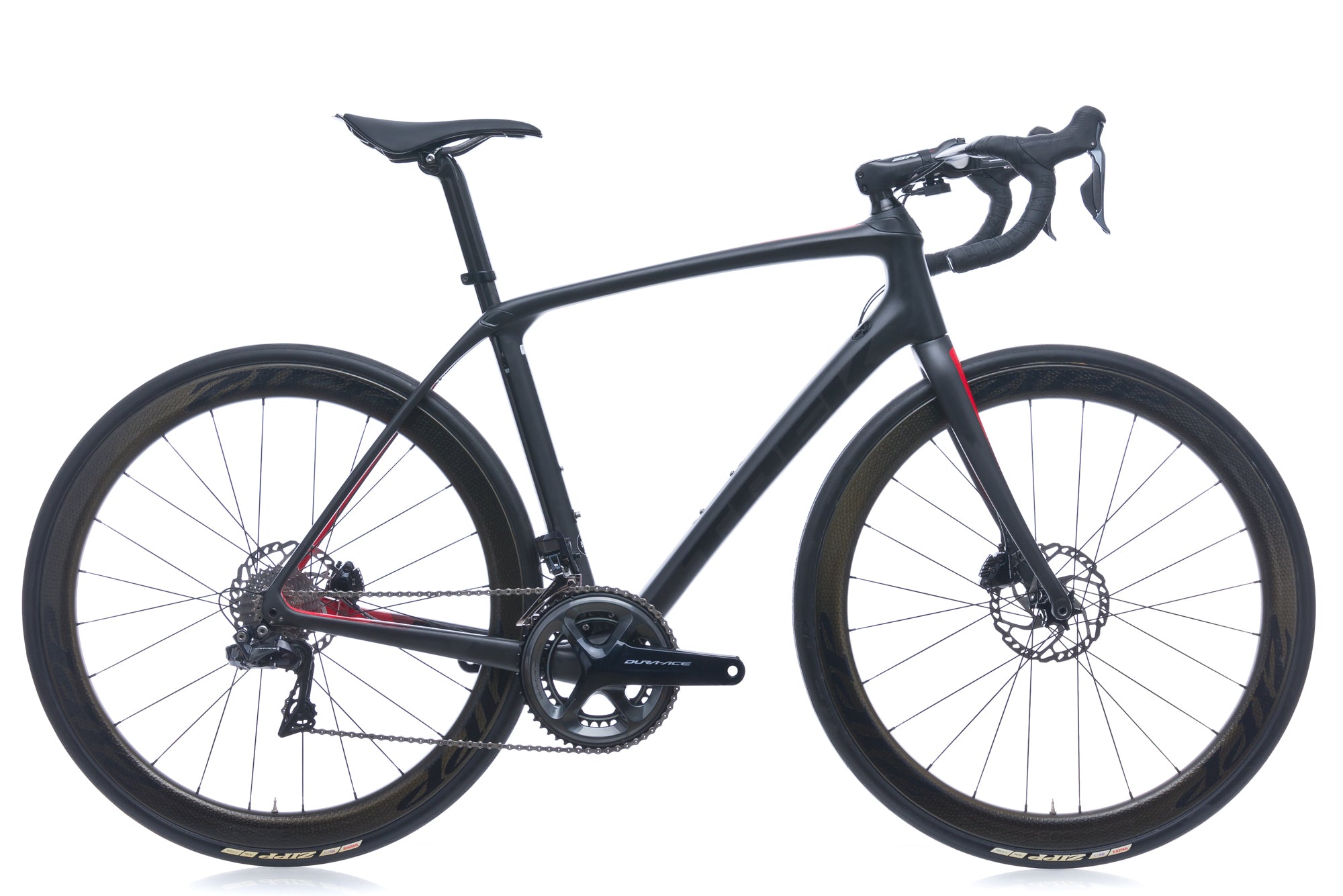 The second-generation Domane was announced in 2016. The main revision to the bike was the addition of a front IsoSpeed decoupler to decouple the steerer tube from the head tube reduce vibrations at the front end without impacting handling.
The second-generation Domane was announced in 2016. The main revision to the bike was the addition of a front IsoSpeed decoupler to decouple the steerer tube from the head tube reduce vibrations at the front end without impacting handling.
High-end SLR models also featured a new slider that allowed riders to alter the level of damping offered by the rear IsoSpeed (SL models retained the original non-adjustable IsoSpeed). New disc versions of the Domane were also offered, increasing tire clearance to 32mm.
Domane Gen 3 (2020-2022)
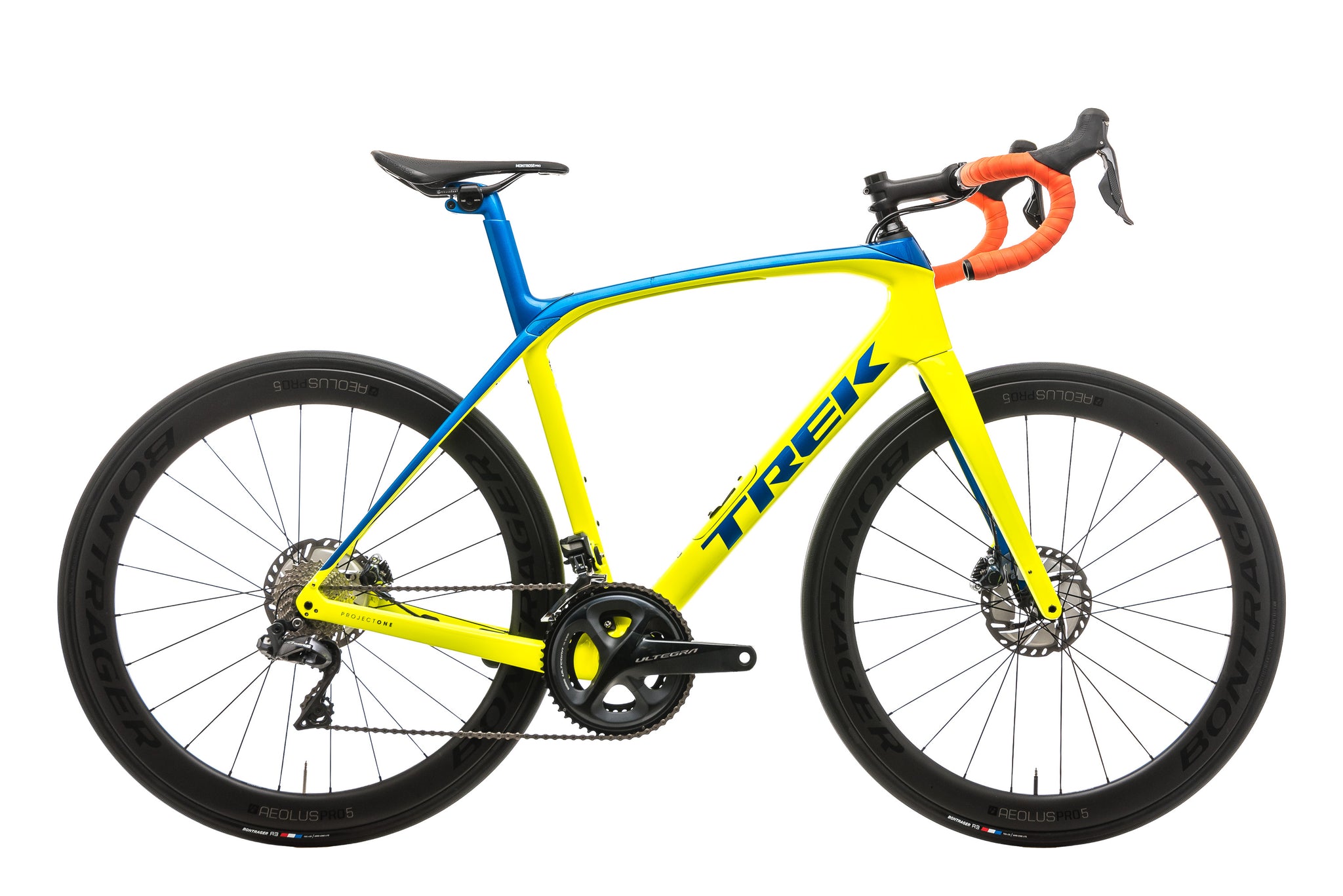 The third-gen Domane pushes the bounds of the endurance bike genre further. The top tube IsoSpeed on high-end SLR models has been improved. It is tunable and offers a finer balance between stiffness and comfort. It uses a repositioned slider under the top tube and an additional elastomer integrated into the design to offer more damping (SL models retain the original non-adjustable IsoSpeed system).
The third-gen Domane pushes the bounds of the endurance bike genre further. The top tube IsoSpeed on high-end SLR models has been improved. It is tunable and offers a finer balance between stiffness and comfort. It uses a repositioned slider under the top tube and an additional elastomer integrated into the design to offer more damping (SL models retain the original non-adjustable IsoSpeed system).
The tube shapes have all been tweaked, borrowing technology from the Madone aero road bike to improve aerodynamics. The Domane Gen 3 offers more tire clearance and can fit up to 38mm tires. The Hidden Storage compartment in the downtube provides a discrete space on the bike to store spare tubes, tools, and snacks.
Domane Gen 4 (2023+)

The Domane Gen 4 has two major update: the rear IsoSpeed system is no longer adjustable and Front IsoSpeed has been removed entirely. Both these changes significantly reduce the Domane's overall weight, making the new frame around 300 gams lighter.
The new Rear IsoSpeed provides roughly the same compliance as the old version’s softest setting. According to Trek, this is where most people ran it anyway. The new version is more neatly visually integrated and all the components are entirely tucked away inside the top tube.
Also, the Domane now uses a more traditional (and convenient) telescoping seatpost rather than a seatmast. The new L-shaped IsoSpeed architecture provides the desired flex without the built-in seatmast.
With the move from standard 28mm to 32mm tires, Trek claims the added air volume cancels out Front IsoSpeed’s nominal comfort gains, so there wasn’t any point in using it anymore. Eliminating Front IsoSpeed has made the new Domane frame significantly lighter than its predecessor.
The aero shaping of the frame tubes is also more pronounced with more aggressive Kammtail profiles. Exposed cables are also cleaned up by routing them through the headset instead of behind the stem. The internal frame storage has been retained.
Future Shock vs. IsoSpeed
Specialized Future Shock
The introduction of Future Shock on the 2017 Roubaix was a large departure from the simplicity of Zertz inserts, which are passive damping inserts with no moving parts. Specialized partnered with Formula 1 innovators, McLaren Applied Technologies, to design the new Future Shock. It uses a spring in the head tube that actively suspends the rider with 20mm of vertical travel.
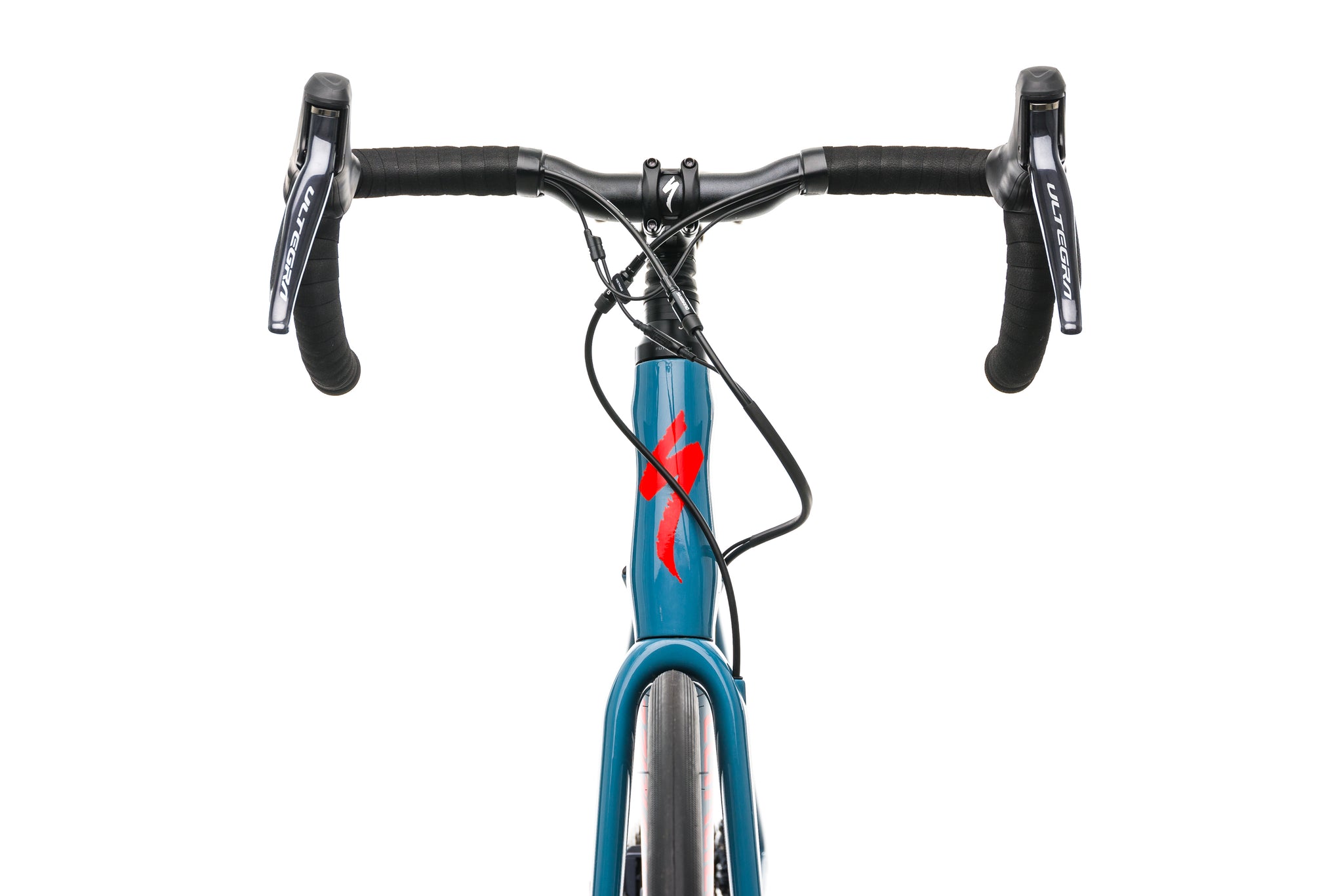 A Future Shock headset from the front
A Future Shock headset from the front
Specialized chose to use a coil spring system because it can actively absorb the frequencies encountered on the road without adding excessive weight. Springs are also less complex and have less stiction than traditional suspension systems (e.g., an air fork on a mountain bike) and require less force to initiate their travel.
Because the Future Shock is positioned under the stem, rather than between the fork and frame (like a suspension fork on a mountain bike). When the front wheel encounters rough terrain, the entire bike moves up toward your hands rather than the wheel moving toward the frame in isolation. Specialized claims this provides comfort benefits without losing any handling or efficiency. The bike's wheels are held together rigidly by the frame and the wheelbase doesn’t change through the suspension's travel so handling is more predictable that way.
The damping of the original Future Shock could be adjusted to suit different rider weights, terrain, and stiffness preferences. For the fifth-generation Roubaix, this requires disassembling the system, removing it from the head tube, and swapping the spring. This should be a fairly simple task for most novice mechanics with basic tools. The majority of fifth-generation Roubaixs come standard with the “hard” spring installed. “Medium” and “soft” springs are also available.
Future shock only suspends the front of the bike. At the rear, seatpost flex is the main source of comfort. Increasing the seatpost’s effective length enhances this so Future Shock Roubaixs have a seat clamp located 65mm lower than the top of the seat tube to provide optimal flex. The seat tube opening is flared above that to provide ample room for the post to move.
The Future Shock system is also in use on Specialized’s Diverge gravel bike, Ruby women’s endurance bike (discontinued), and Sirrus fitness bike.
Note: Specialized issued a recall January 2019 for certain Future Shock headsets. Not all bikes from all model years are affected. Addressing the recall involves replacing the steerer tube collar to improve its resistance to stress corrosion cracking. All Future Shock bikes sold at The Pro’s Closet are inspected for this recall and serviced if needed.
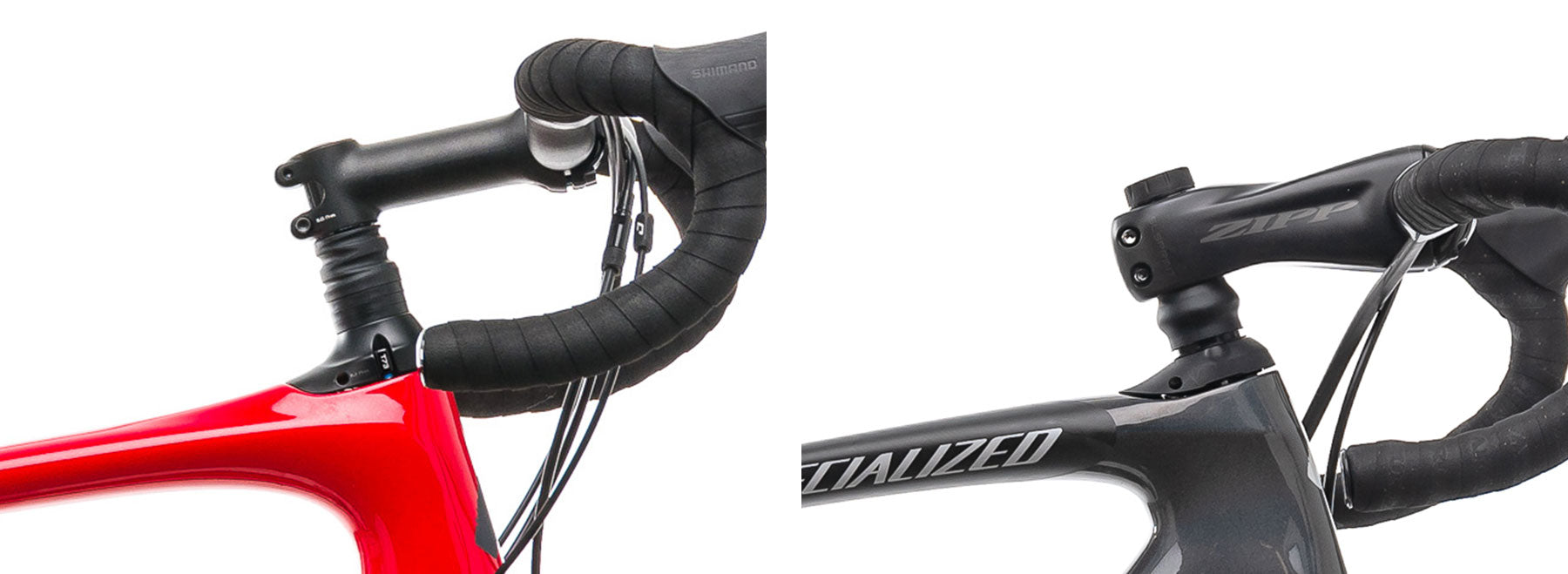 Future Shock 1.0 vs Future Shock 2.0. Note the damping adjustment dial and the new boot.
Future Shock 1.0 vs Future Shock 2.0. Note the damping adjustment dial and the new boot.
The 2020 Roubaix introduced Future Shock 2.0 on the high-end of S-Works, Pro, and Expert builds. This adds a hydraulic damper to the system to further improve the suspension characteristics. It still utilizes a small coil spring, but the hydraulic damper improves compression and rebound damping, and it gives the rider an external dial to adjust damping on-the-fly. Turning the dial clockwise closes damping. This makes the Future Shock feel stiffer for sprinting (it does not fully lock-out). Turning it counter-clockwise opens damping to make it feel softer and more active on rough surfaces. There is also a more discrete looking shock boot under the stem.
Future Shock 2.0 tech only comes on the higher-end builds. All other 2020 Roubaixs like the Sport and Comp models come with a simplified Future Shock 1.5 that improves on the original but leaves out the hydraulic damping and external dial.
Compared to the original Future Shock, Future Shock 1.5 uses a more progressive main spring, a new top-out spring, and a new bottom-out bumper. Extra booster springs can be added for riders looking to fine-tune the stiffness. The hydraulically damped Future Shock 2.0 cannot be retrofitted to previous generation Future Shock, or new Future Shock 1.5 Roubaix.
For the Roubaix SL8, Specialized introduced a revamped Future Shock 3.0 that improves durability, serviceability and tunability. There is a new, thicker rubber boot and additional seals to keep out water and contaminants. The shock is redesigned so that the booster spring sits at the top for easy access for riders who want to change to a softer or harder spring. Riders can also fit up to five preload washers on top of the spring to tune the system more precisely to different rider weights and riding styles.
Future Shock 3.0 comes in three configurations: 3.3, 3.2 and 3.1. Future Shock 3.3 comes on S-Works and Pro models and offers hydraulic damping that is adjustable while riding with the top dial. Expert and Comp models use Future Shock 3.2 which is hydraulically damped but not adjustable. It is set to the smoothest setting. Future Shock 3.1 comes on Sport and Base models and is undamped, but riders can still adjust the preload with the springs and washers.
Trek IsoSpeed
This video shows IsoSpeed in action on the second generation Domane SLR:
The goal of Trek’s IsoSpeed is the maintain the stiffness, efficiency, and handling characteristics of a race-ready frame while introducing enough compliance to reduce the jarring and fatiguing effect of rough road surfaces. Trek sought to do this without the addition of a suspension system.
 The original rear IsoSpeed decoupler, decouples the seat tube from the top tube, allowing the seat tube to flex with the forces of the road. The top tube is split at the seat tube junction and the seat tube passes through it. The tubes don’t directly touch but are joined by a horizontal shaft and two sealed cartridge bearings. The seat tube is able to move and flex fore to aft a few degrees on this shaft. Between the tubes are two round elastomer inserts that absorb vibration. The seat tube only flexes in a vertical plane so that IsoSpeed can maintain lateral stiffness to keep the feel and efficiency of a traditional race bike. Because of its simplicity, there is almost no weight penalty and it requires little to no maintenance. The bearings and other components are replaceable if needed.
The original rear IsoSpeed decoupler, decouples the seat tube from the top tube, allowing the seat tube to flex with the forces of the road. The top tube is split at the seat tube junction and the seat tube passes through it. The tubes don’t directly touch but are joined by a horizontal shaft and two sealed cartridge bearings. The seat tube is able to move and flex fore to aft a few degrees on this shaft. Between the tubes are two round elastomer inserts that absorb vibration. The seat tube only flexes in a vertical plane so that IsoSpeed can maintain lateral stiffness to keep the feel and efficiency of a traditional race bike. Because of its simplicity, there is almost no weight penalty and it requires little to no maintenance. The bearings and other components are replaceable if needed.
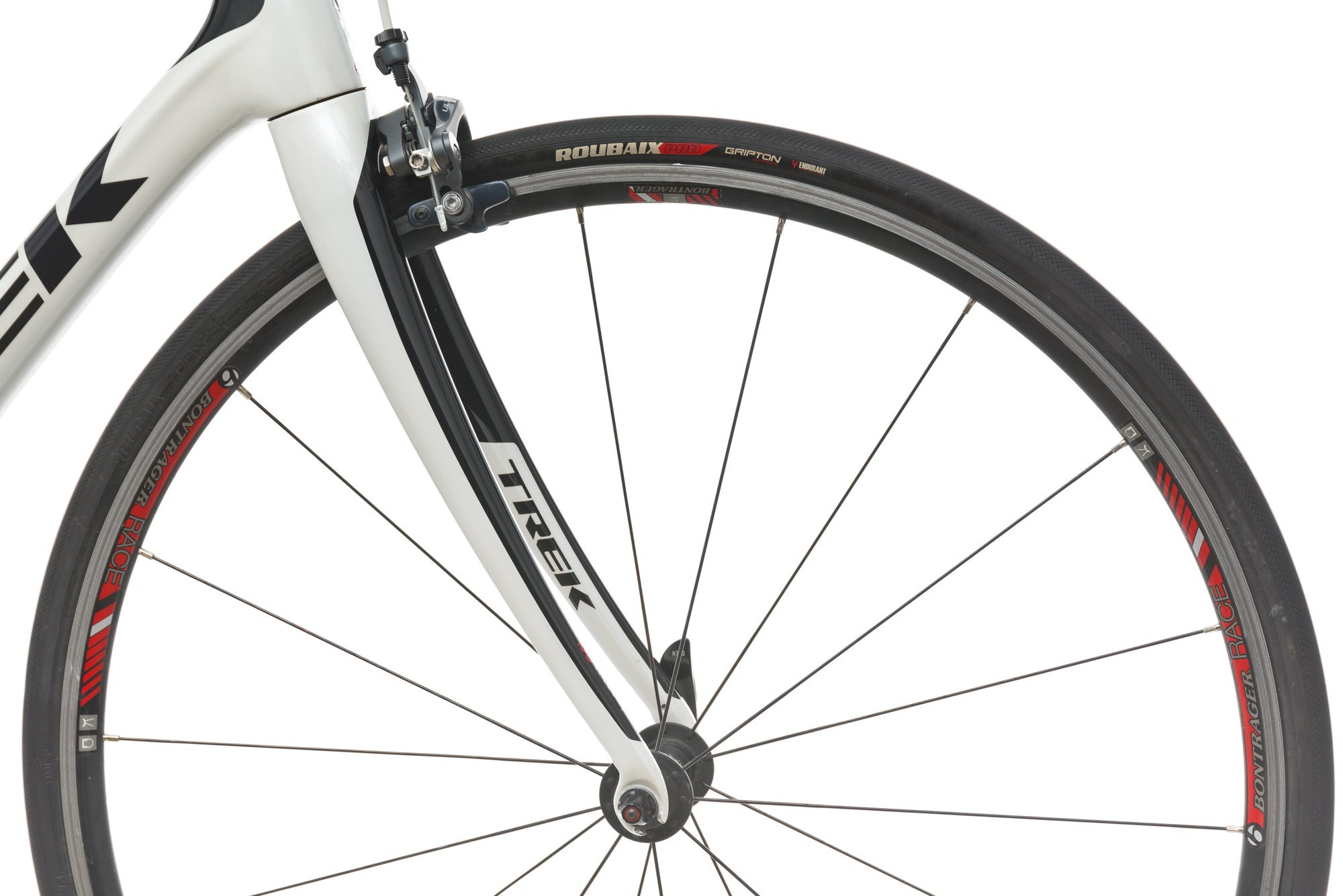 At the front, Trek managed compliance with an IsoSpeed fork that used a larger curvature and reversed dropout for the front axle. This allowed the fork to flex more with bumps and rough road surfaces.
At the front, Trek managed compliance with an IsoSpeed fork that used a larger curvature and reversed dropout for the front axle. This allowed the fork to flex more with bumps and rough road surfaces.
With the second-generation Domane, Trek brought the IsoSpeed decoupler to the front of the bike. The decoupler was contained inside a rocker cup at the top of the headset. The steerer tube is joined to the rocker cup by a horizontal shaft and two sealed cartridge bearings, similar to the rear decoupler. This system allowed the steerer tube to flex fore and aft, providing additional compliance at the front of a bike. The rocker cup was designed to have zero lateral movement, allowing the bike to still steer and handle with precision.
The second-generation Domane also introduced a slider on the seat tube for high-end SLR models to adjust the compliance of the rear IsoSpeed decoupler to suit conditions and rider preferences. The slider worked by changing the amount of seat tube that is allowed to flex. Increasing the effective length of the seat tube increases compliance because a longer lever will flex more than a short lever. Moving the slider toward the bottom increases compliance for rough roads while moving it toward the top increases stiffness for race conditions. The less-expensive Domane SL maintained the original IsoSpeed decoupler without the adjustable slider.
Trek brought IsoSpeed technology over to the Boone cyclocross bike in 2014, the Procaliber cross country mountain bike in 2016, and the Madone aero road Bike for 2018-2022.
 Note how the top L-shaped section of the seat tube extends under the top tube.
Note how the top L-shaped section of the seat tube extends under the top tube.
For the high-end 2020 Domane SLR, Trek utilizes the Top Tube IsoSpeed design that has been refined on the latest Madone. While the original IsoSpeed decoupler relied on the entire seat tube to flex between a split top tube, Top Tube IsoSpeed splits the seat tube in two. The upper portion of the seat tube forms an L-shaped component. The bottom of this “L” extends forward into the top tube and is braced underneath it. The lower part of the seat tube is fixed in place, but the top L-shaped section is still able to flex fore and aft.
Trek claims that Top Tube IsoSpeed allows for more discrete tuning between frame stiffness and ride comfort than the original IsoSpeed design. Originally, because bigger frames had longer seat tubes, taller riders got a softer ride and shorter riders got a firmer one. (The slider on the second-generation Domane SLR could be used to help combat this.) With the latest IsoSpeed design, the seat tube section braced underneath the top tube controls the stiffness and flex. The length of this component can be varied independently of frame size which allows it to be engineered to provide a softer ride for smaller frame sizes. A new built-in damper inside the seat tube also helps control movement better than the previous design.
On the Domane SLR, the stiffness of Top Tube IsoSpeed is adjustable using a slider hidden underneath the top tube. The Front IsoSpeed design remains the same. Like the previous generation, less expensive Domane SL models will not have the adjustable slider.
The fourth-generation Domane has eliminated the slider and front IsoSpeed entirely. The compliance of the rear IsoSpeed is equal in to the previous-generation IsoSpeed in the softest setting, which Trek claims most riders preferred. Because of the increased prevalence of more comfortable 32+ mm tires, Trek felt it negated the need for front IsoSpeed because it wasn't as compliant as a higher-volume tire anyway.
Specialized Roubaix vs. Trek Domane: Tire Clearance

|
Bike Model |
Max Tire Clearance |
|
2004-2007 Roubaix |
28mm |
|
2008-2010 Roubaix SL2 |
28mm |
|
2010-2012 Roubaix SL3 |
30mm |
|
2012-2017 Roubaix SL4 |
30mm (32mm disc) |
|
2017-2019 Roubaix |
32mm |
|
2020-2023 Roubaix |
33mm |
|
2024+ Roubaix SL8 |
38/40mm |
|
2012-2015 Domane Gen 1 |
28mm (32mm Disc) |
|
2016-2019 Domane Gen 2 |
32mm |
|
2020-2022 Domane Gen 3 |
38mm |
|
2023+ Domane Gen 4 |
38mm |
On-Bike Storage
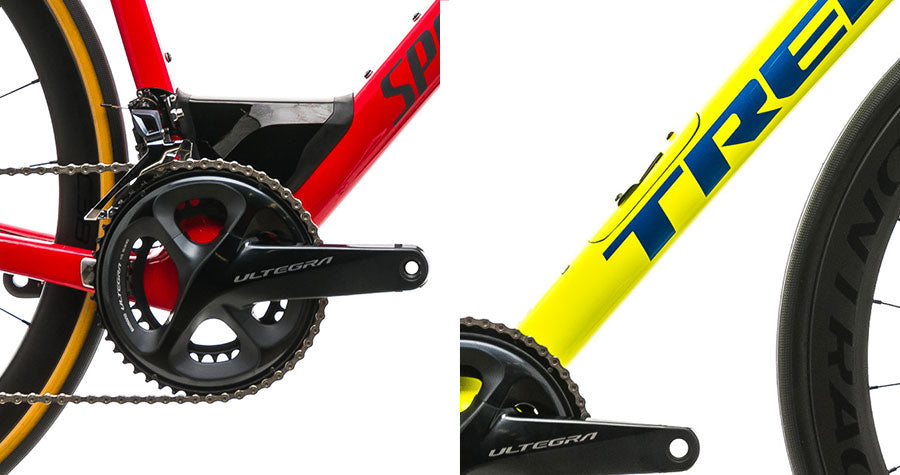 The fifth-generation Roubaix introduced the S.W.A.T. box. S.W.A.T. stands for “storage, water, air, tools.” The box is a removable compartment that attaches to the frame at the bottom of the main triangle using two mounts. Some fifth-generation Roubaixs for sale at The Pro’s Closet will include a S.W.A.T. box. It can be purchased aftermarket if desired. The previous generation Roubaix did not have the necessary S.W.A.T. box mounts. The 2020-2023 Roubaix and 2024+ Roubaix SL8 do not have compatible mounts for the S.W.A.T. box.
The fifth-generation Roubaix introduced the S.W.A.T. box. S.W.A.T. stands for “storage, water, air, tools.” The box is a removable compartment that attaches to the frame at the bottom of the main triangle using two mounts. Some fifth-generation Roubaixs for sale at The Pro’s Closet will include a S.W.A.T. box. It can be purchased aftermarket if desired. The previous generation Roubaix did not have the necessary S.W.A.T. box mounts. The 2020-2023 Roubaix and 2024+ Roubaix SL8 do not have compatible mounts for the S.W.A.T. box.
The 2020 Trek Domane Gen 3 was the first to feature Trek’s new Hidden Storage compartment. This is a hollow storage area in the down tube only available on 2020 carbon Domane frames. The down tube bottle cage mount is attached to a removable hatch that’s accessed with a small lever. Attached to that cover is a holder for a multi-tool, and inside the down tube is a nylon tool roll for holding spare tubes and tools. (This functions similarly to the S.W.A.T. box available on some Specialized mountain bikes.) This feature is also on the latest 2023+ Trek domane Gen 4
Bottom Bracket Standards
The Specialized Roubaix used the common BSA threaded (a.k.a. English) bottom bracket standard until the forth (SL4) generation. From there it transitioned to Specialized’s OSBB bottom bracket standard. OSBB stands for “oversized bottom bracket” and encompasses various press-fit standards from BB30 to PF30 depending on the frame. This has been the standard for Specialized’s high-end models for the 2012-2017 model years.
In 2017 Specialized began transitioning the Roubaix and other models back to traditional BSA threaded bottom brackets. For the fifth-generation Roubaix, various models came with either an OSBB and BSA bottom bracket shell. Frames still using OSBB had Praxis Works threaded conversion bottom brackets installed instead of standard press-fit bottom brackets to increase reliability. For 2020, all Roubaix models are now BSA threaded.
The Trek Domane has used Trek’s BB90 press-fit bottom bracket standard since its inception. The Domane Gen 3 and Gen 4, however, have been built around the new T47 threaded bottom bracket standard. T47 is a larger version of traditional BSA threaded bottom bracket shell that claims to increase stiffness and crankset compatibility.
Rim and Disc Brake Options
If you’re a rim brake connoisseur interested in a Roubaix or Domane, purchasing used or “new old stock” is going to be your only option. Disc brakes have taken over as standard for both bikes because of the increased stopping power and tire clearance.
The Roubaix was available with rim brakes only from 2002 to 2012. The first disc brake model was introduced for the 2013 model year and Specialized offered both rim and disc options until 2017. Rim brake Roubaixs do exist from 2018 but were sold as “pro-only” variants supplied to the Bora-Hansgrohe and Quick-Step Floors race teams. These teams chose to stay on rim brake in 2018 for faster wheel changes in case of tire punctures. These bikes are rare will be very hard to come by.
Trek offered the Domane with rim brakes from 2013 to 2019. The first disc brake version wasn’t introduced until the 2015 model year. From 2020 onward, the new generation Domane will only be available with disc brakes.
Women’s Models
Specialized and Trek have both historically offered women’s variants of the Roubaix and the Domane. The women’s Roubaix was called the Ruby. It used different geometry and touchpoints intended to suit the proportions of female riders. Trek offered WSD (Women’s Specific Design) versions of the Domane which also adjusted geometry and touchpoints.
Over the years, data gathered from sales, bike fitters, and testing have shown that many women’s bike fits don’t deviate far from men’s fits. As a result, both Specialized and Trek now offer bikes with identical have now transitioned to unisex geometry for the Roubaix and Domane. The women’s specific Specialized Ruby and Domane WSD are not available after 2019.
Race results
Both the Roubaix and Domane have experienced success at the cobbled classics. This is the type of racing that inspired these designs. Listed below are the winners riding either the Roubaix or Domane at major cobbled races in the last 10 years. Italy's Strade Bianche has also been included because its long gravel sectors are similar to the types of roads recreational endurance riders might seek out.
Paris-Roubaix
2019 | Philippe Gilbert - Roubaix
2018 | Peter Sagan - Roubaix
2014 | Niki Terpstra - Roubaix
2013 | Fabian Cancellara - Domane
2012 | Tom Boonen - Roubaix
2010 | Fabian Cancellara - Roubaix
Tour of Flanders
2014 | Fabian Cancellara - Domane
2013 | Fabian Cancellara - Domane
2012 | Tom Boonen - Roubaix
Gent-Wevelgem
2016 | Peter Sagan - Roubaix
2012 | Tom Boonen - Roubaix
E3
2013 | Fabian Cancellara - Domane
2012 | Tom Boonen - Roubaix
Strade Bianche
2016 | Fabian Cancellara - Domane
2012 | Fabian Cancellara - Domane
Over the last decade, the Roubaix has achieved nine major wins to the Domane’s six. Keep in mind, however, that list only shows wins and does not factor in podiums or any other results to create a more detailed and nuanced picture. For example, in the 2019 Paris-Roubaix, the Specialized Roubaix achieved the amazing feat of having five finish in the top 10.
There are also many cases of pro riders choosing standard race bikes in these classics. Several riders have won Flanders, Gent-Wevelgem, and E3 on the Specialized Tarmac. Bike choice often comes down to personal preference, and many pros may choose ultimate efficiency over comfort. As we all know, pros are fitter and tougher than the average rider, so don't assume you should always have the same gear that they do.
For the average rider, pro racing may have little application to everyday riding. Pros are exceptionally fast and, of course, their physical talents make the biggest difference in results. Note that Cancellara and Boonen feature heavily on this list. They were the kings of the classics and likely could have won on any bike.
Ultimately, this should not be taken as definitive evidence that any bike is superior to another. But professional racing does show how products perform at the absolute limit. This can be powerful for influencing fans and inspiring brand loyalty. It is not uncommon for particular brands to become popular due to successful pro riders, as you will see in the next section.
Popularity
Because The Pro’s Closet is the world leader in used bikes, we have substantial data about what bikes sell well. I dug into our road sales for the last 12 months and compared how many Roubaix bikes we sold compared to the Domane. The two are our top-selling endurance bikes and also the top-selling bikes of any type from each brand. We have a fairly similar stock of both bikes, and inventory has yet to be depleted, so sales can be fairly compared to determine popularity among our customers.
I also polled riders in our shop to see which bike they preferred between the two. Our employees all love cycling, obsess over bikes, and have access to a huge selection of products. They are knowledgeable and opinionated. We had over 60 respondents to this poll and many explained why they would pick one over the other.
The charts below show the results:
 It is interesting that our sales figures and internal polling results line up. It’s fairly close, but in both cases, the Roubaix narrowly beats out the Domane. Does this mean the Roubaix is better? No, it’s just slightly more popular.
It is interesting that our sales figures and internal polling results line up. It’s fairly close, but in both cases, the Roubaix narrowly beats out the Domane. Does this mean the Roubaix is better? No, it’s just slightly more popular.
Individual preference is a huge driver behind which bike a rider prefers. In our shop poll, I asked why people choose one over the other. Below are some of their answers.
Specialized Roubaix
- I like the paint and looks better.
- I like the active feel of Future Shock. It’s really game-changing on rough roads. No other bike feels like this. The Adjustability of Future Shock 2.0 is fantastic.
- It will likely have slightly better resale (see our article about resale).
- It has won Paris-Roubaix more than any other bike.
- Peter Sagan rode it.
- It’s not a Trek.
Trek Domane
- I like the paint and looks better.
- I like the muted, smooth, efficient feel of IsoSpeed. I don’t want my bike to feel suspended and active like Future Shock. IsoSpeed is simpler and there are fewer moving parts to worry about.
- The new integrated toolbox is much cleaner looking and better designed.
- Huge tire clearance.
- Fabian Cancellara rode it.
- It’s not a Specialized.
Final thoughts
As you can tell from our shop poll, looks and brand loyalty play a large part in buying decisions. Maybe you already have made up your mind, but setting loyalties aside, the matchup between the Specialized Roubaix and Trek Domane is a tough one to call.
In my estimation, the two tech factors that should play the largest role in your decision are Future Shock vs. IsoSpeed. Future Shock and IsoSpeed have very different feels when riding on the road. The difference can be described as “active” vs. “passive.”
Future Shock is noticeable in how it is constantly moving to absorb bumps and imperfections in the road. It's the better option for front-end comfort and riders who need extra cushioning for their hands, arms, or shoulders. IsoSpeed sits more in the background, muting vibration, and it is the better option for riders who need extra rear-end comfort for their sit bones or lower back. Some riders will prefer one ride feel or tech concept more than the other.
When shopping for road bikes on The Pro’s Closet, there is a handy compare tool that allows you to look at three bikes side-by-side. This allows you to compare things like geometry, weight, component spec, and price. If you have any questions, our expert Ride Guides can help you find your next endurance bike.
Are you a Roubaix or Domane fan? A Future Shock or IsoSpeed fan? Or is there a different option out there you think is even better? Let us know in the comments!


